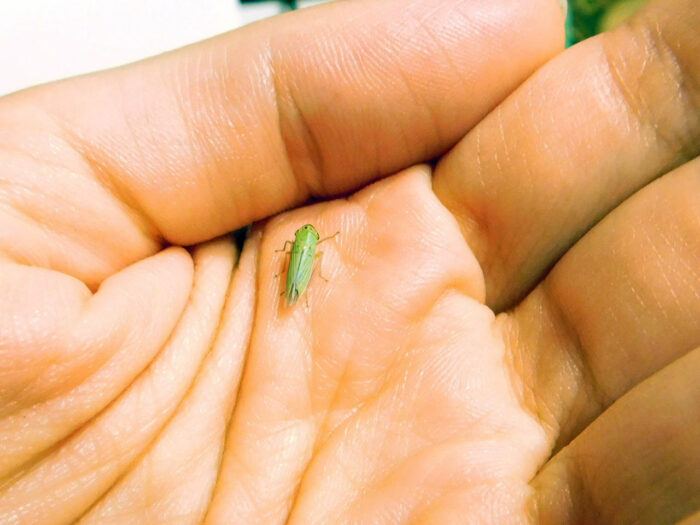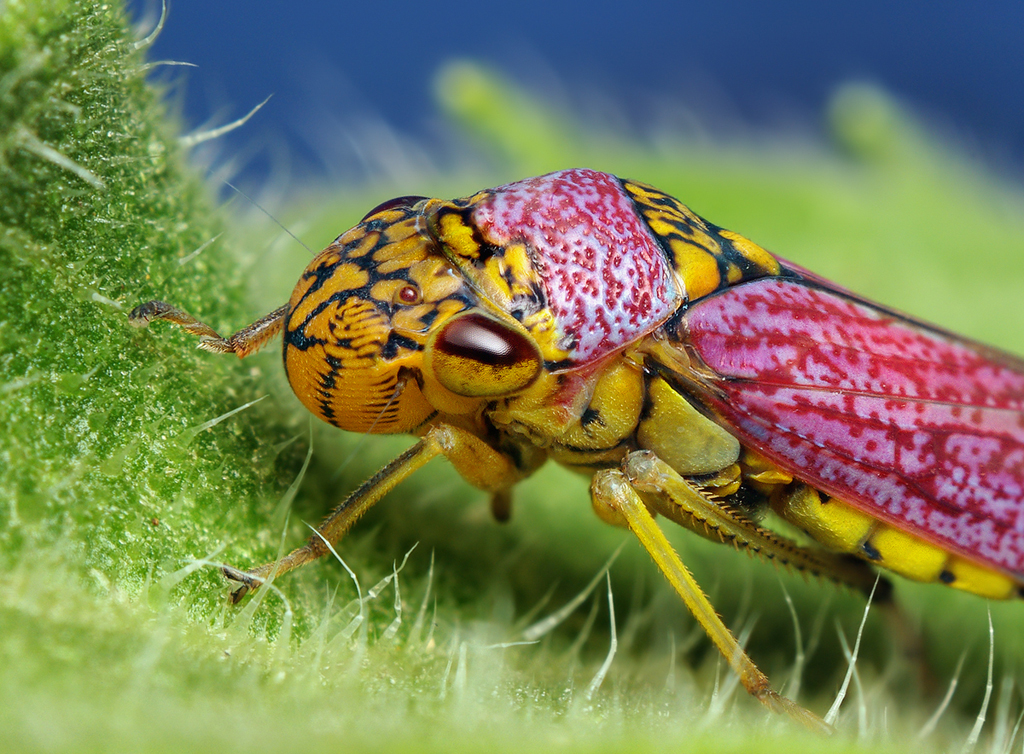Could a common backyard insect lead to future invisibility technology? One cadre of bioengineers thinks so.
Leafhoppers exist “in virtually all places inhabited by vascular plants,” North Carolina State University says. If that’s true, then the special particles that could enable invisibility are all around us.
A Penn State University study investigated brachosomes, which are tiny, soccer ball-shaped structures punctured with through-holes throughout their surface. Leafhoppers (such as Gyponana serpenta) produce these microscopic objects copiously — enough to coat their roughly one-centimeter-long bodies.

Photo: Winifred S. via DeviantArt
Scientists have known this since the 1950s. But they’re so tiny and complex that nobody was capable of successfully reproducing one in a lab until the Penn State team, which modeled them using high-tech 3D printers.
Studying them closely, they found intricacies that could act as blueprints for unprecedented technology: invisible cloaking materials.
“With a new strategy to regulate light reflection on a surface, we might be able to hide the thermal signatures of humans or machines,” Lin Wang, the lead study author and a postdoctoral scholar in mechanical engineering at Penn State, told ScienceDaily. “Perhaps someday people could develop a thermal invisibility cloak based on the tricks used by leafhoppers. ”
Wang went on to explain that the structures cut light reflection by up to 94% — the first time anyone’s seen a natural, hollow structure control light this precisely.
Insects are ‘inspirations’
Brachosomes themselves aren’t necessarily special — there’s a reason they draw comparisons to soccer balls. But leafhoppers create them along incredibly specific geometric lines. According to the researchers, leafhoppers make brachsomes in consistent sizes across species and body sizes. Each brachosome is roughly 600 nanometers in diameter (about half the size of a bacterium) with pores around 200 nanometers wide.
“That makes us ask a question,” Tak-Sing Wong, the study’s lead researcher, explained. “Why this consistency? What is the secret of having brochosomes of about 600 nanometers with about 200-nanometer pores? Does that serve some purpose?”
For the insects, the purpose is clear. The design is unique in that it absorbs ultraviolet (UV) light and scatters visible light. A leafhopper cloaked in the particles can better hide from predators that see in UV, such as most birds and some small mammals.
For humans, the potential applications don’t end with invisibility. Higher-efficiency solar energy harvesting, coatings that can protect shelf items like pharmaceuticals from light damage, and even better sunscreens are possible, the researchers said.
“Nature has been a good teacher for scientists to develop novel advanced materials,” Wang told Innovations Report. “In this study, we have just focused on one insect species, but there are many more amazing insects out there that are waiting for material scientists to study, and they may be able to help us solve various engineering problems. They are not just bugs; they are inspirations.”






